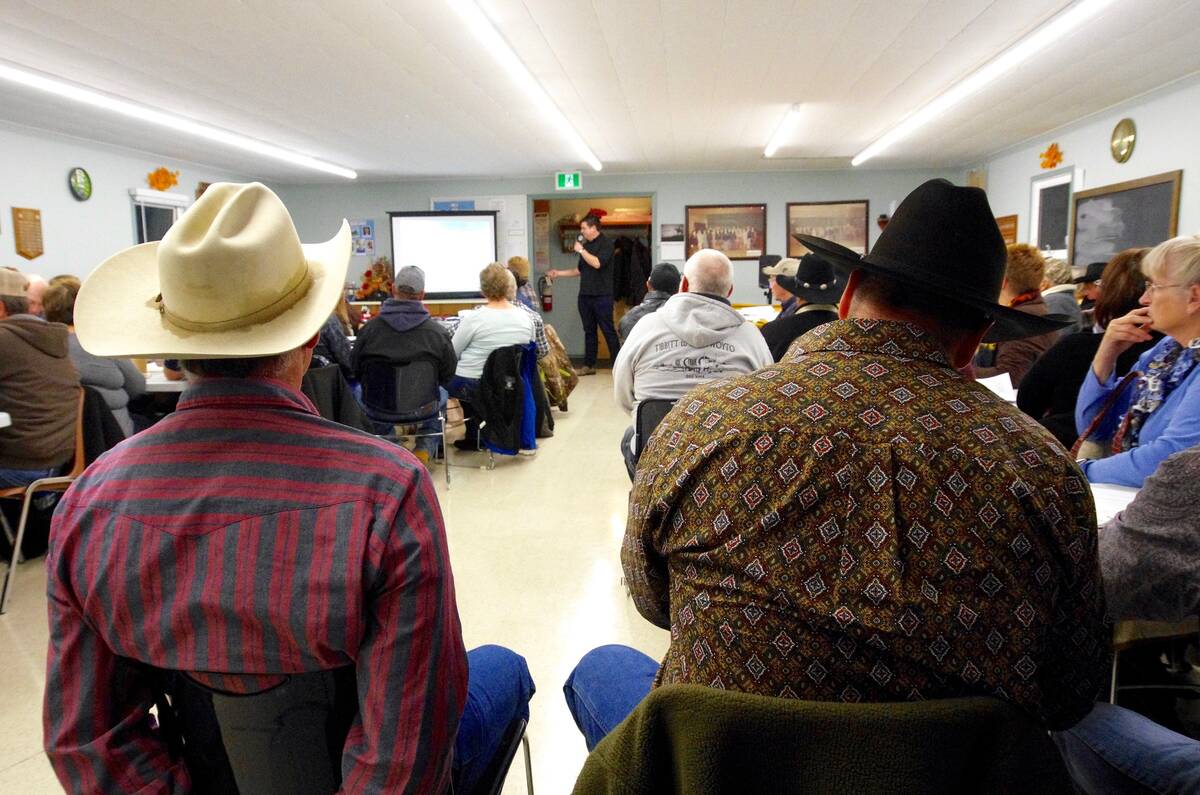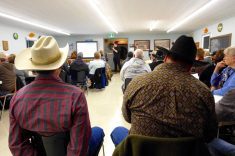Building on the success of their 2019 “Guardians of the Grasslands” documentary film, the Canadian Cattle Association is launching a new video game under the same brand.
“Guardians of the Grasslands: The Game” is a sim-based video game geared towards students in grades seven to ten. The game is scheduled for launch at the end of March in Alberta and in other provinces by the beginning of the school year, the Manitoba Beef Producers’ annual meeting heard.
The Guardians of the Grasslands brand isn’t new to educators. Guardians of the Grasslands in the Classroom was launched in 2021 through Agriculture in the Classroom. The resource is aligned to the curriculum of the respective provinces and includes a lesson plan and workbook that students fill out based on what they’ve learned after watching the film.
Read Also

Don’t blow off that beef producer meeting
Local veterinarians and livestock experts often speak at beef producer group events. They have good advice for the farmer on vaccines, calving, beef herd management and more.
“This game is the next iteration, kind of keeping up the momentum (of the documentary) and giving students a different, more interactive way to learn about the topic,” says Lynsay Beavers, stakeholder engagement specialist with the CCA. “Everything has been narrated by the same fellow who narrates Guardians of the Grasslands, so it all feels very cohesive.”

Unlike other agriculture-themed simulation games like “Farmers’ Life,” it is not focused on making a profit from farming.
“We’re not managing the animals for health, and we’re not teaching people how to be farmers or ranchers,” Beavers said. “We’re teaching them how to manage an ecosystem.”
The game’s running time is also much shorter than other sim-based games, and that’s largely because it’s designed to be finished within a 40-minute class.
“I’d say the fastest that it can be completed is probably somewhere between 12 and 15 minutes, if they make all the right choices,” says Beavers.
As such, it is quite simple. The game is based on rotational grazing. The student gets to choose their avatar, the cattle type (Hereford, Black Angus, or Charolais), and their landscape (river, pond, or stream). The goal of the game is to score carbon and wildlife points.
The player has several fields (paddocks) their cattle can be moved into for grazing. Carbon points are earned by grazing the right fields for the right amount of time. If they overgraze, they lose carbon points. Before the player is able to move their cattle from one field to another, they must answer a skill-testing question based on information they learned in the documentary.
Wildlife or invasive weeds alerts will pop up intermittently during the game, and students get wildlife points for finding them and correctly interacting with them. For instance, if a certain animal appears in a field, you will lose wildlife points if you move your cattle into that field to graze.
Fifteen carbon points and five wildlife points are needed to win the game.
The game was developed with funding from the Canadian Agricultural Partnership and the Canadian Cattle Association. The CCA worked with the Alberta-based company, Inside Education, to make sure the game aligned with the Alberta teaching curriculum. The game will be rolled out through Agriculture for Life, an Alberta-based not-for-profit charity that fills a similar role to Agriculture in the Classroom in other parts of Canada.

While the rollout is happening in Alberta first, Beavers says there are plans in the works to expand the game into other jurisdictions.
“We’re just working with the provinces,” she says. “We have to secure some extra funding because the game will have to change slightly to align with their curriculum.”
Those changes don’t only relate to how it fits into a lesson plan. Game developers are consulting with conservation groups like Birds Canada and Ducks Unlimited to make certain that the wildlife is representative of the local environment.
“A lot of what’s in the Alberta game is very much transferable to Saskatchewan,” says Beavers. “But in Manitoba and definitely in Ontario, there will be different species that the students encounter when they’re collecting wildlife points. So we kind of have to switch that up.”
Beavers said there’s still a lot of work to do to get it into other provinces, which is why the launch is being delayed until September. They haven’t even firmed up who will be delivering the program in schools outside of Alberta. But in all likelihood, it will be Ag in the Classroom, since they are already involved in the other Guardians of the Grasslands educational products.
A reduced version of the game is currently being developed and will be marketed for use at trade shows. The number of points needed to win will be reduced, and the skill-testing questions will also be removed.
“You can just walk up to a booth and play in five minutes, and then carry on your way,” says Beavers. The trade show version will be up and running by July.
The “Guardians of the Grasslands” documentary is a 12-minute film that was released to film festivals in 2019. After earning accolades, strong reviews, and several awards, it was launched to the public in 2021. The documentary explains the role that cattle play in maintaining the health of the Great Plains grasslands. In addition to its continued use in classrooms, the short documentary continues to be showcased at environmental conferences, including the recent COP 27 in Dubai and COP 15 in Montreal.
















